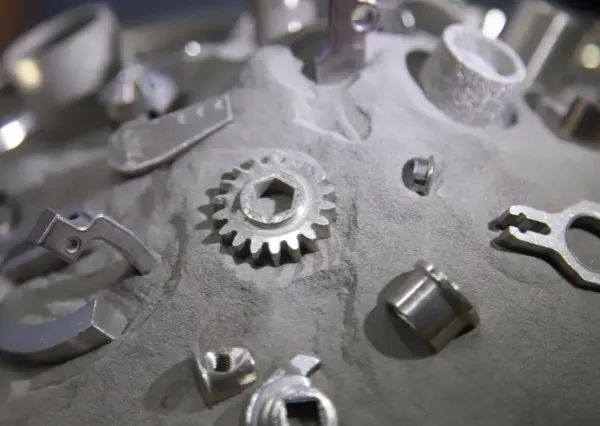Powder metallurgy is a process for manufacturing metal parts by machining metal powder into a desired shape,this technology reduces the agglomeration of metal components and eliminates coarse, uneven internal organisation,The application of this technology allows metal products to have excellent mechanical and physical properties, which cannot be obtained using traditional methods.the process typically includes steps such as powder mixing, press moulding and sintering. can produce complex shaped parts with high precision and uniformity, while reducing material waste and saving energy. This method is widely used in the manufacturing industry, especially for the production of high performance and high precision parts.
Powder metallurgy moulding methods:
Osweypm uses the following processes to manufacture and supply powder metal products.
1.Sintered Parts(PM),Pressing and sintering for manufacturing parts.
2.Metal Injection Molding(MIM),For high precision, complex shapes.
For manufacturing, less is more:
- Less machining: The process is a moulding process that allows the part to be close to its final shape. Most parts can be applied directly to the project after sintering without additional secondary machining, and for the manufacturing industry, less machining means higher productivity and greater economic benefits.
- Higher mechanical properties: Due to the use of metal powder as raw material, it is possible to achieve the mixing of various materials and give full play to the respective characteristics of various metal powders, the powder particles used in the manufacturing process are very small, and the parts produced have higher dimensional accuracy and surface finish. The sintering process removes impurities and gaps between the powder molecules, and the powder metallurgy parts have higher strength and wear resistance and can withstand greater loads and wear.
- From less material to lower costs: Compared to traditional processing methods, powder metallurgy does not require large quantities of raw materials, the material for powder metal comes from recycled old metal, and osweypm’s metallurgical technology can achieve “zero material waste” during the production process, and the edge of the manufacturing waste can be recycled many times, which means that Osweypm can save a large amount of money on the cost of materials, and ultimately the customer’s purchasing cost will be reduced as a result.
- Environmental sustainability: the source of the material is recycled scrap metal, which is made into a special powder. the use of scrap metal maximises the use of natural resources and is a new technology for material recycling, which contributes to environmental sustainability, a sustainability that we have always challenged and pursued.
Unlimited Possibilities in Powder Metallurgy:
Powder metallurgy products can be used in automobiles, motorbikes, textile machinery, medical equipment, aerospace, power tools, hardware tools, smart homes, construction machinery, various metal powder (iron, copper, stainless steel-based) components; the application of powder metallurgy technology seems to have no boundaries, and is suitable for any industry and any project.
- Applications in the medical device market: The manufacture of medical devices with geometrically complex shapes and precise scales, such as artificial joints, implantable devices, dental prosthetic components, etc., which have good corrosion resistance, is the key to improving the effectiveness of surgical procedures and the quality of life of patients.
- Aerospace market applications: combustion components for aero-engines and structural components for aerospace applications, etc., can meet the requirements for physical properties at exceptionally high temperatures and operate stably in complex ambient temperatures, thus improving the life cycle and operational reliability of aerospace equipment.
- Applications in the automotive and motorbike markets: engine gears, transmission components, vibration dampers, driveline assemblies, lift systems, brake system assemblies, etc. Effectively improve the corrosion resistance of components, so that their physical strength and life expectancy comply with industrial standards.
- Applications in the smart home market: energy-saving motors, helical gears, motor gears, transmission parts, connecting parts, radiators.

